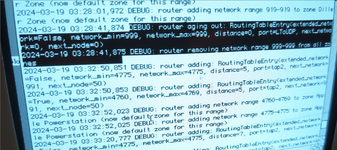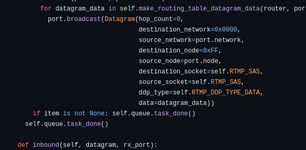import logging
import time
import tashrouter.netlog
from tashrouter.port.ethertalk.tap import TapPort
from tashrouter.port.localtalk.ltoudp import LtoudpPort
from tashrouter.port.localtalk.tashtalk import TashTalkPort
from tashrouter.router.router import Router
logging.basicConfig(level=logging.DEBUG, format='%(asctime)s %(levelname)s: %(message)s')
#tashrouter.netlog.set_log_str_func(logging.debug) # comment this line for speed and reduced spam
router = Router('router', ports=(
LtoudpPort(seed_network=999, seed_zone_name=b'JUPAK'),
# TashTalkPort(serial_port='/dev/ttyAMA0', seed_network=988, seed_zone_name=b'JUPAKL TashTalk'),
TapPort(tap_name='tap2', hw_addr=b'\xDE\xAD\xBE\xEF\xCA\xFE'),
))
print('router away!')
router.start()
try:
while True: time.sleep(1)
except KeyboardInterrupt:
router.stop()


